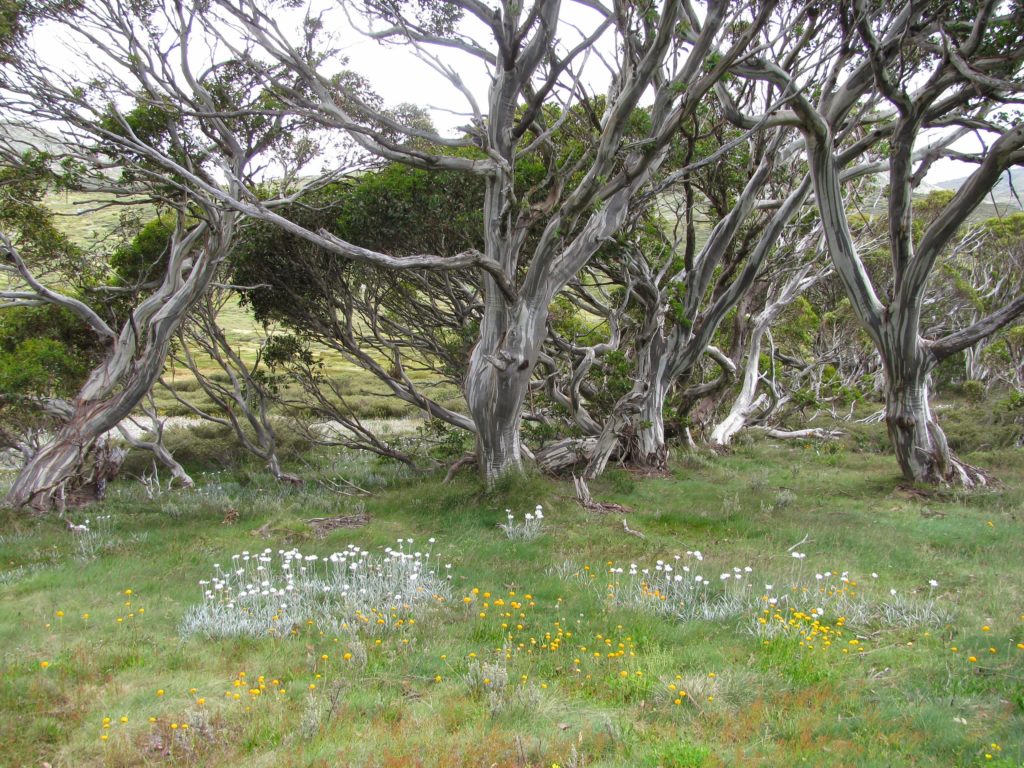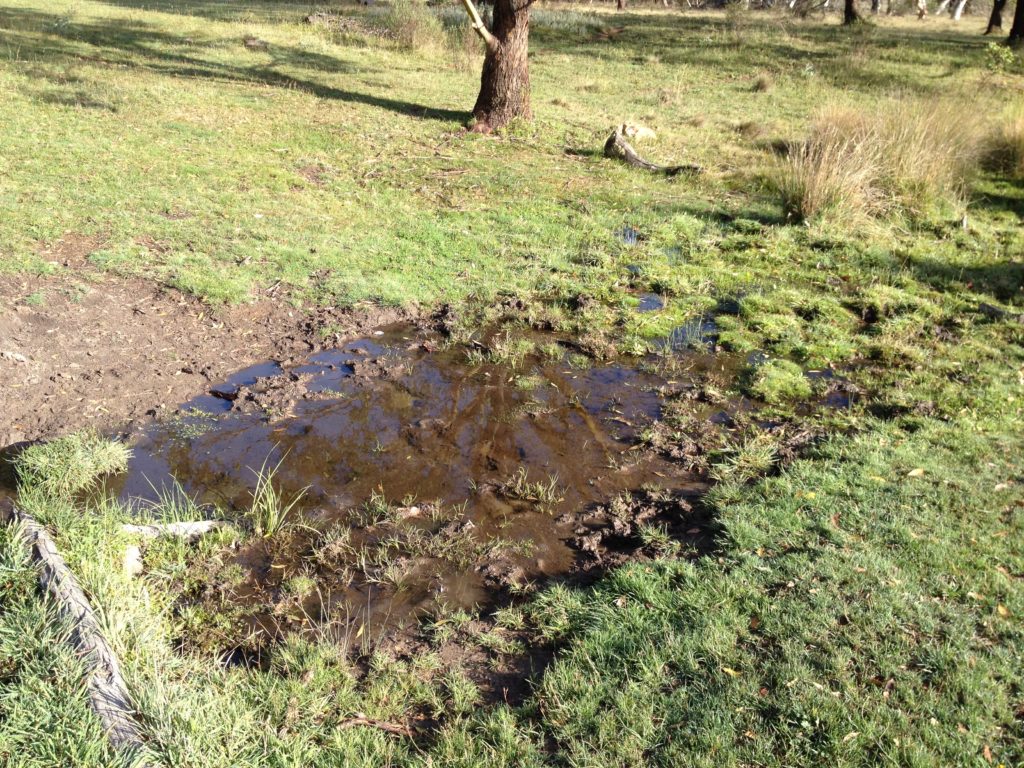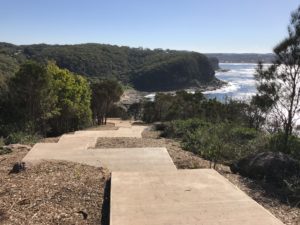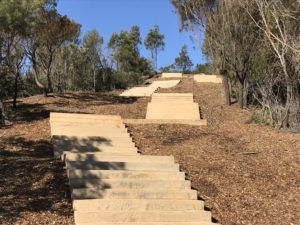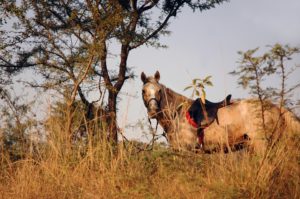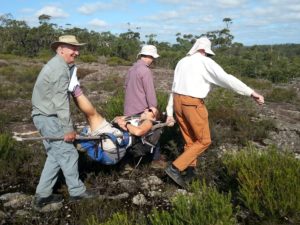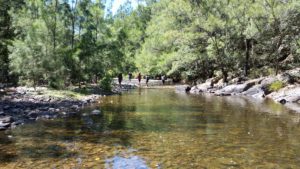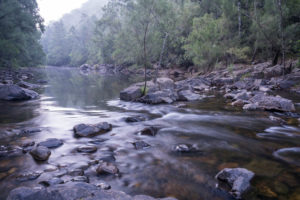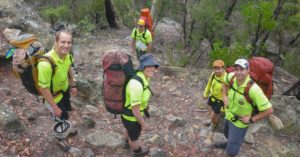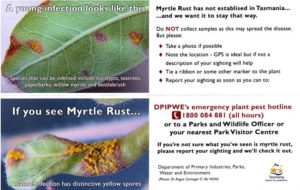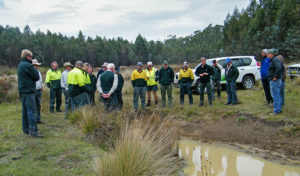BUSH SEARCH AND RESCUE NSW Inc.
Keith Maxwell – President BSAR
Bush Search and Rescue NSW (BSAR) was founded as the self-help and self-contained “Search and Rescue Section” of the NSW Federation of Bushwalking Clubs in 1936 by Paddy Pallin plus a number of prominent bushwalkers of that time. BSAR is held in high regard with NSW Police. This report can only provide an overview of a very active volunteer rescue group.
THE BIG PICTURE. In April of 2017 Bushwalkers Wilderness Rescue Squad (BWRS) changed its name to BSAR. BSAR is a specialist remote area bush search and rescue squad affiliated with the NSW Volunteer Rescue Association (VRA). Some other specialist squads of the VRA includes NSW Cave Rescue, Australian Civil Air Patrol (AusCAP) and radio squads WICEN & CREST. For more information see the VRA website at www.rescue.org.au
A YEAR of CHANGE. After a long period of consultation plus a member vote BSAR has decided to change from affiliation with the VRA to become part of the NSW State Emergency Service (SES). It is not just that BSAR is now in a stronger financial position. An equal (major) consideration was the ability to better continue its role as a valuable community resource as a volunteer remote area search and rescue squad. The volunteer s & r space is changing with changes in volunteering within SES.
A full changeover will take time with rebranding of our Rooty Hill building, new vehicles (& sale of VRA branded Toyota and trailer), new equipment, membership induction plus supply of uniforms etc. Completion of the four stage process will continue into 2018 / 2019.
TRAINING. BSAR has a strong membership and an active training program to assist completion of nationally recognised Competency Based Training (CBT). CBT will now be progressively aligned to SES requirements. Like all emergency services BSAR members must quantify their skills through CBT. Operational members are experienced bushwalkers with a mix of additional skills in radio communication, vertical rescue, observation, emergency management, First Aid and other bush search and rescue skills.
EQUIPMENT. This change has given BSAR access to far greater resources and equipment. A major change for BSAR will be access to “GRN” (Government Radio Network). In various forms GRN attempts to link communications throughout all NSW government agencies from NP&WS to Police, RFS, NSW Ambulance etc. Over time BSAR will receive new radios and appropriate training. BSAR still has its existing, outstanding HF radio network.
CALLOUTS. During the past year BSAR was placed on STANDBY numerous times for incidents (with missing persons) that were quickly resolved. However, in November 2017 assisted NSW Police at Katoomba to locate and retrieve the body of a visitor from France. He had fallen over one of the big cliffs in the area. In May, BSAR assisted in a forensic search near Ingar Picnic Ground, Wentworth Falls then in June BSAR was part of a large search at Mt Ku-ring-gai for a visiting Chinese student to Australia. More recently the body was located some distance from the search area.
NAVSHIELD. Warm days (but cold nights) made for an enjoyable NavShield 2018 on the last weekend of June. NavShield is a major bush navigation (map and compass) training event for the Emergency Services and bushwalking club teams. Renewed publicity within SES refreshed participant numbers to almost 500. The location was dry woodland of the Macdonald River off the Putty Road. Bushwalking club teams performed well. Full details and results are available at the BSAR website – www.bsar.org.au
OXFAM TRAILWALKER. TrailWalker in August each year has grown to become a 100km / 48 hour OR 50km / 24 hour track & fire road walkathon that uses bushland on the northern fringe of Sydney. BSAR provides first and second safety response teams, over shifts, for this event of around 3,000 participants!! TrailWalker provides both excellent member training and practice in co-ordination of BSAR teams whilst being involved in community outreach. See the OXFAM website for route details of this special event – https://trailwalker.oxfam.org.au/sydney/trail/
BARRINGTON TOPS. In September of recent years BSAR has also held a multi-agency training event to continue searching for a Cessna plane lost at night in bad weather of August 1981. While many planes have failed to successfully fly over Barrington Tops, “VH-MDX” is the only plane whose location remains a mystery.
SAFETY ASSISTANCE. During the year BSAR also provided safety assistance at several outdoors events including the Paddy Pallin Rogaine in June.
FIRST AID. The current version of First Aid training offered by BSAR is very popular. In 2018 THREE cycles of training will occur instead of the usual two. Courses in the ONE Day St John Ambulance “Provide First Aid” (formerly known as “Senior First Aid”) OR three day “Remote Area First Aid (RAFA)” fill up quickly. BSAR offers this training to spread First Aid knowledge generally among bushwalkers. Training is bushwalker friendly with a volunteer bushwalker instructor plus a discount fee. Register at the BSAR website.
In 2019 Bushwalking NSW will take over access to this First Aid training since BSAR cannot continue this model of instruction within SES.
OUTREACH. BSAR is active through the digital world on its website with detailed information on bush safety, distress beacons, recent callouts and links to other sites such as the NSW Police TREK program of free PLB hire and BNSW (Bushwalking NSW). BSAR is also active on FaceBook and Twitter. Eventually, BSAR as part of SES will have to close its website – www.bsar.org.au All options are being explored to continue digital dissemination of the above information.
MEMBERSHIP. Membership of BSAR remains a valuable ‘fit’ for BNSW bushwalkers keen to volunteer their time in community service. We have tasks big and small to suit all levels of commitment. Contact the BSAR Secretary at secretary@bsar.org.au
CONCLUSION. BSAR with its great people and diverse events is held in high regard by NSW Police and now the SES for remote area search and rescue. While it is a very different organisation to that founded in 1936 it is still committed to assisting persons in distress in remote areas. 2018 / 2019 will be a year of change as BSAR fully integrates into SES and explores the opportunities to better serve the community. Access to GRN will enhance our remote area communications. NavShield 2018 was a great event. Other training was very successful. St John Ambulance “Provide First Aid” and “RAFA” courses offered via BSAR are very popular. BSAR is digitally active in encouraging bush safety.

